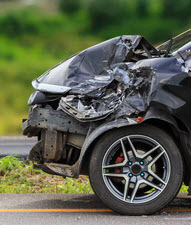In negligence cases, the victim/plaintiff must establish liability by a preponderance of the evidence. This legal term means “more likely than not.” Because of the low burden of proof, and because so many cases settle out of court, many lawyers are not very diligent when it comes to collecting electronic evidence.
But this kind of evidence makes a tremendous difference. At the beginning of the trial, a Florida jury knows nothing about the case. So, the more evidence they hear, the more sympathetic they become. Insurance companies know this, and so the more evidence the victim/plaintiff has, the better the settlement offers are.
If the victim sustained a serious injury, damages include compensation for economic losses, such as medical bills, as well as noneconomic losses, such as pain and suffering. Florida law basically defines a “serious injury” as anything that prompts Emergency Room treatment.
Digital Surveillance Video
This kind of evidence is especially important in hit-and-run cases. Even if the camera is a few blocks away from the crash scene, because of the low standard of proof in civil cases, the evidence may still be valuable.
Video evidence is useful in most other kinds of car crash claims as well. Eyewitnesses are sometimes mistaken or biased. Aggressive insurance company lawyers always broadcast these flaws to the jury. But assuming the camera is in good working order, the footage is never wrong and the lens is never biased.
The old days of grainy videotape are long gone. Today’s digital video generates sharp, clear pictures which bring events to life. Furthermore, most Florida courtrooms have large video screens designed just for this type of evidence.
Sometimes, obtaining this evidence is a problem. Many businesses use internet-based remote monitoring services. So, the footage may be stored at an offsite location. Furthermore, the video may be under a third party’s control, and that third party may be located outside the court’s 150-mile subpoena power. It is difficult to obtain evidence under these circumstances. Sometimes, your attorney must negotiate with another attorney.
Event Data Recorder
The EDR mandate took effect in the early 2000s. So, pretty much every vehicle on the streets today has an Event Data Recorder. The EDR is similar to the “black box” in a commercial jet. Exact capability varies by make and model of automobile. But most EDRs contain vehicle data such as:
- Vehicle speed,
- Steering angle,
- Engine RPM, and
- Brake application.
For negligence claim purposes, the EDR is like an on-board engineer who can testify about very specific items. For example, an eyewitness might say the tortfeasor (negligent driver) was speeding. But the EDR might establish that the tortfeasor was travelling 79.6mph. The EDR evidence is much more compelling.
The EDR is not easy to obtain either. Florida has very strong vehicle information privacy laws. So, attorneys usually need court orders to review them. Furthermore, many insurance companies destroy totaled vehicles within a few days. If that happens, the EDR is gone forever. So, attorneys usually send spoliation letters to insurance companies. These letters create an ironclad duty to preserve all evidence in the case, including the EDR.
Count on Experienced Attorneys
Electronic evidence can make or break a car crash case. For a free consultation with an experienced car accident lawyer in Brandon, contact Reed & Reed. We have four area offices (St. Petersburg, Lakeland, Tampa, and Clearwater).
https://needreed.com/some-dos-and-donts-after-a-florida-car-accident/

